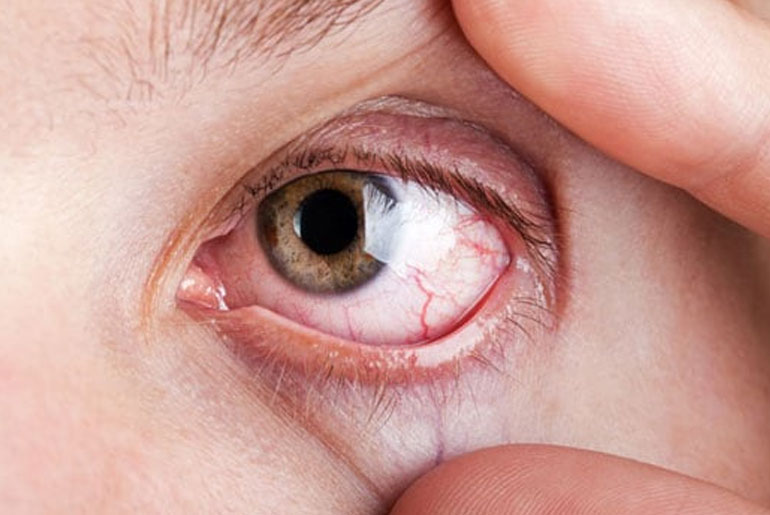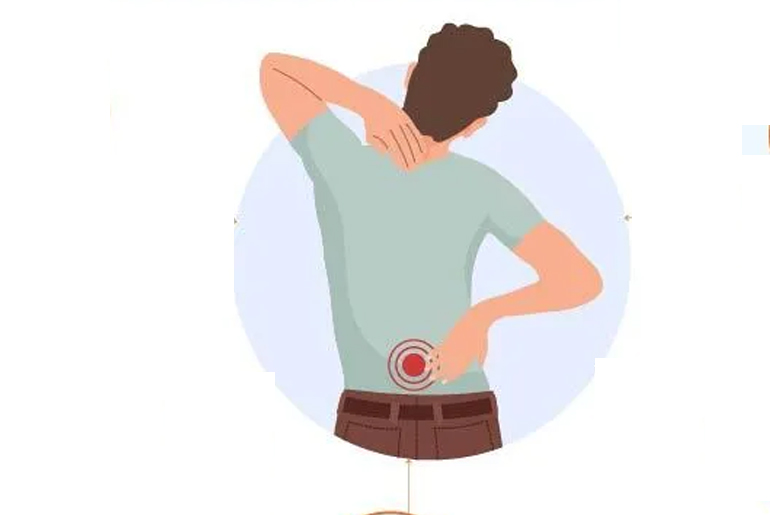The prevalence of screens in our daily lives has reached an all-time high, with digital devices dominating both work and leisure activities. Whether it’s working on a laptop, scrolling through social media, or watching TV, our eyes are constantly exposed to screens, leading to increased strain and potential long-term consequences for eye health.
The cumulative screen time across multiple devices—workstations, smartphones, and televisions—contributes to digital eye strain, also known as computer vision syndrome. Symptoms such as dryness, fatigue, headaches, and blurred vision are becoming increasingly common as a result of prolonged exposure to blue light and reduced blinking rates.
To counteract these effects, proactive measures are essential. Incorporating dietary changes such as consuming foods rich in antioxidants, omega-3 fatty acids, and vitamin A can help maintain optimal eye health. Additionally, lifestyle adjustments, including following the 20-20-20 rule (taking a 20-second break every 20 minutes to look at something 20 feet away), using blue light filters, maintaining proper screen ergonomics, and practicing eye exercises, can significantly reduce digital strain.
As the world becomes increasingly hyperconnected, prioritizing eye health through conscious habits and preventive care is crucial to mitigating the adverse effects of excessive screen time.
List of foods that you should add to your diet:
To maintain healthy eyes and protect them from the strain caused by excessive screen time, incorporating a variety of nutrient-rich foods into your diet is essential. Here’s a detailed list of foods that support eye health, along with their nutritional benefits:
Fish (Salmon, Sardines, Tuna):
- Nutritional Value: Rich in Omega-3 fatty acids and HDL (good cholesterol).
- Benefits: Omega-3s help reduce dry eye symptoms by improving lubrication and decreasing inflammation. They also contribute to overall eye health, supporting the retina and reducing the risk of age-related macular degeneration (AMD).
Nuts and Seeds (Peanuts, Almonds, Cashews, Walnuts, Pumpkin Seeds, Sunflower Seeds, Flax Seeds):
- Nutritional Value: High in Omega-3 fatty acids, Vitamin E, and antioxidants.
- Benefits: Omega-3s help prevent dry eyes, while Vitamin E is a powerful antioxidant that protects eye cells from oxidative damage. These nutrients are especially important for individuals following a vegetarian diet as they provide essential fats and vitamins for eye health.
Citrus Fruits (Lemon, Orange, Grapefruit):
- Nutritional Value: High in Vitamin C, an essential antioxidant.
- Benefits: Vitamin C helps combat oxidative stress, which can damage eye tissues and increase the risk of cataracts and macular degeneration. It also aids in reducing dry eye symptoms. Other fruits like tomatoes and strawberries are also rich in Vitamin C and support overall eye health.
Green and Dark Leafy Vegetables (Spinach, Kale, Lettuce, Broccoli, Peas, Green Turnips):
- Nutritional Value: Rich in Vitamin A and lutein.
- Benefits: Vitamin A is crucial for good vision, particularly for night vision, and plays a role in preventing dry eyes. Lutein, a type of antioxidant found in these vegetables, helps filter harmful blue light and protects the retina.
Orange-Colored Fruits and Vegetables (Carrots, Sweet Potatoes, Mango, Apricots):
- Nutritional Value: High in Vitamin A and β-Carotene.
- Benefits: Vitamin A and β-Carotene are key for maintaining proper vision, as they are involved in the visual cycle and help protect the eyes from degeneration. They support the cornea and the retina, ensuring healthy eyesight.
Water:
- Nutritional Value: Hydration.
- Benefits: Adequate water intake (6-8 glasses a day) is essential for preventing dry eyes. Proper hydration ensures that your tear production is maintained, preventing discomfort and irritation from dryness. Water also helps flush out toxins that could contribute to eye problems.
Incorporating these foods into your daily diet can significantly improve your eye health, support proper vision, and protect your eyes from digital strain and other environmental factors.
Symptoms where your eyes are screaming for a break:
It’s important to recognize when your eyes are tired, especially given how much we rely on digital devices daily. If you experience any of these common symptoms, your eyes are signaling that they need a break:
- Persistent Dryness or Itchiness: When your eyes feel dry, itchy, or gritty, it’s often a sign of reduced blink rate, which is common when staring at screens for prolonged periods. This leads to insufficient lubrication and can cause irritation.
- Blurred or Fluctuating Vision: Digital eye strain can cause blurred vision or vision that seems to fluctuate, especially after long screen time. This happens because focusing on a screen for extended periods strains the eye muscles, leading to temporary changes in vision.*
- Fatigued or Burning Eyes: Tired eyes may feel heavy, fatigued, or burning, a result of focusing too long without proper breaks. This often happens when looking at a screen too closely or for extended periods without giving your eyes rest.
- Headaches or Neck Pain: Eye strain from prolonged screen use can also trigger headaches, particularly around the temples or forehead, and neck pain due to poor posture or improper screen alignment. These pains are often caused by squinting or staring at a screen in poor lighting conditions.
- Sensitivity to Light: If you suddenly find yourself more sensitive to light after being on a screen for too long, your eyes are signaling fatigue. Digital screens emit blue light, which can increase sensitivity, especially when overexposed.
When you notice any of these symptoms, it’s essential to take a break from your screen and give your eyes some rest. Following the 20-20-20 rule—every 20 minutes, look at something 20 feet away for 20 seconds—can help alleviate some of these effects. Additionally, adjusting your posture, screen brightness, and ensuring proper lighting can reduce the strain on your eyes.
Healthy habits:
To keep your eyes healthy in this screen-dominated world, adopting healthy habits is key. Here’s a detailed breakdown of each recommendation:
- Follow the 20-20-20 rule: This rule is a simple but effective strategy. Every 20 minutes, take a break and focus on something at least 20 feet away for 20 seconds. This small adjustment can help relax the eye muscles, reduce strain, and prevent tired eyes.
- Adjust Screen Ergonomics: Position your screens at or slightly below eye level and at a comfortable distance to reduce strain. Desktop screens tend to be less straining than smartphones or tablets, which are often held too close. Ensuring the screen is properly angled can prevent neck and eye strain.
- Take More Breaks—Blink Often: Blink consciously to keep your eyes lubricated and prevent dryness and irritation. Additionally, taking frequent breaks away from screens allows your eyes to recover and reduces the risk of eye fatigue.
- Hydrate Your Eyes: Using artificial tears or lubricating eye drops can be beneficial, especially when your eyes feel dry after long periods of screen exposure. Moreover, staying hydrated by drinking plenty of water can also help keep your eyes moisturized and reduce dryness.
- Limit Non-Essential Screen Time: Be mindful of the screen time spent on leisure activities, especially in the evenings. Giving your eyes a break by reducing screen exposure and spending time outdoors can be beneficial for both your eye health and overall well-being.
- Give Preference to Proper Lighting When Working on a Laptop: Ensure that your screen brightness matches the surrounding light, and reduce glare to minimize strain. Avoid direct light from overhead or behind you, as it can make your screen harder to read and cause more strain on your eyes.
- Regular Eye Exams: Schedule regular eye checkups with an optometrist or ophthalmologist to detect any early issues, such as refractive errors, that might be contributing to eye strain. Regular exams ensure that your eyes are well-cared for and can prevent long-term damage.
Dr. Singh’s conclusion emphasizes that balance is the key—it’s not about completely avoiding screens, but rather creating a healthy relationship with them. By following these habits, digital eye strain can be managed, and your eye health can be maintained.
Disclaimer:
The information contained in this article is for educational and informational purposes only and is not intended as a health advice. We would ask you to consult a qualified professional or medical expert to gain additional knowledge before you choose to consume any product or perform any exercise.






